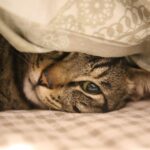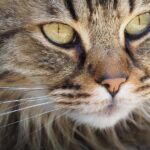Why Cats Lick Themselves Excessively: Understanding Feline Grooming Behavior
Cats are known for their meticulous grooming habits, spending a significant portion of their day engaged in licking. While this behavior is mostly normal, excessive licking can point to underlying issues that pet owners should be aware of. In this article, we will explore the reasons behind why cats lick themselves excessively, encompassing both behavioral and health-related factors, effects on their wellbeing, and what you can do to manage this behavior.
The Importance of Grooming in Cats
Grooming is a fundamental activity for cats, serving multiple vital functions:
Hygiene: Licking helps cats to clean themselves, removing dirt, oils, and parasites from their fur and skin.
Temperature Regulation: The saliva evaporating from the fur after licking helps cats regulate their body temperature, particularly in warm weather.
Comfort and Relaxation: Grooming can be a soothing activity. It may help cats relieve stress or anxiety, similar to how humans might engage in self-care routines.
Social Grooming: In multi-cat households or in the wild, cats groom each other as a way to establish bonds and demonstrate affection.
Scent Marking: Licking also serves to spread pheromones that communicate territory and social status among cats.
While some licking is normal, excessive licking signals that there might be more to the story.
Physical Causes of Excessive Licking
Excessive licking can often be attributed to various physical conditions:
1. Allergic Reactions
Cats may develop allergies to food, environmental factors (like pollen or dust mites), or even chemical irritants. Symptoms can include itching and irritation, leading to increased licking in an attempt to alleviate discomfort.
2. Dermatitis
Skin conditions such as dermatitis, which can be allergic or non-allergic, result in itchy skin. Cats may lick or scratch at the affected areas to relieve this itchiness, creating a vicious cycle.
3. Parasites
Fleas, mites, and other parasites can lead to intense itching and irritation. Flea infestations are particularly common and can drive a cat to lick themselves excessively in an attempt to relieve the discomfort.
4. Infections
Bacterial or fungal infections can also lead to excessive grooming. These infections may cause itching, inflammation, and discomfort, prompting the cat to lick the area excessively.
5. Chronic Pain
Joint pain, arthritis, or other chronic pain conditions might lead a cat to lick certain areas, especially if they are trying to soothe discomfort. This behavior can manifest as licking specific joints or rough patches on their bodies.
6. Hormonal Imbalances
Certain hormonal issues, such as hyperthyroidism, can affect a cat’s skin and coat condition. As a result, a cat may lick more frequently due to the changes in their physical state and discomfort.
7. Skin Tumors or Growths
In some cases, excessive licking can signal the presence of skin tumors or growths. This behavior might arise if the growths are causing irritation or discomfort, prompting the cat to lick in an attempt to soothe the area.
Psychological Causes of Excessive Licking
Feline behavior is complex, and sometimes psychological factors are at play in cases of excessive licking.
1. Anxiety and Stress
Cats can experience anxiety for various reasons, including changes in their environment, such as new pets, moving to a new home, or changes in routine. Excessive licking may serve as a coping mechanism for their anxiety.
2. Boredom
Cats need stimulation, and a lack of mental or physical enrichment can lead to boredom. In response, some cats may develop compulsive behaviors, including excessive grooming as a way of self-soothing.
3. Compulsive Behaviors
Compulsive licking can develop as a behavioral issue, similar to obsessive-compulsive disorders in humans. This can lead to overgrooming, resulting in bald patches or skin lesions.
4. Trauma or Negative Experiences
Cats that have experienced trauma may develop anxiety-based behaviors, including excessive licking. This can occur after an injury, a difficult veterinary visit, or even an encounter with another aggressive animal.
Health Consequences of Excessive Licking
Excessive licking is not just a nuisance; it can lead to several health issues:
Skin Damage: Continuous licking can lead to abrasions, sores, or infections, setting off a cycle where irritation and licking perpetuate each other.
Hair Loss: Overgroomed areas may become bald or thin as cats continuously disturb their fur.
Infections: Repeated trauma to the skin can lead to infections, which may require medical intervention.
Behavioral Issues: Compulsive licking can escalate into more serious behavioral problems, requiring behavioral modification strategies and veterinary intervention.
When to Seek Veterinary Help
As a pet owner, it’s crucial to monitor your cat’s behavior. If you notice that your cat is licking excessively, consider the following:
Duration and Frequency: Pay attention to how long and how often your cat is licking. If it’s beyond their usual grooming behavior, it’s time for a closer look.
Physical Symptoms: Look for physical signs such as redness, swelling, bald patches, or sores. These could indicate an underlying medical issue requiring treatment.
Behavioral Changes: If your cat has become more withdrawn, anxious, or aggressive, it may signify deeper issues beyond excessive licking.
Consult Your Veterinarian: A vet can conduct a thorough examination, possibly including skin tests, allergy tests, or behavioral assessments. Early detection is crucial for effective treatment.
Management and Treatment Options
Depending on the underlying cause, various treatment options may be available for excessive licking behaviors:
1. Veterinary Treatment
- Medications: If allergies or infections are the cause, your veterinarian may prescribe antihistamines, corticosteroids, or antibiotics to treat the underlying issues.
- Flea Prevention: If parasites are present, a comprehensive flea treatment plan will be needed.
2. Dietary Changes
- If food allergies are suspected, your vet may recommend a special diet or elimination diet to identify allergenic proteins.
3. Environmental Enrichment
- Increase physical and mental stimulation by providing toys, scratching posts, or platforms for climbing. Interactive play can reduce boredom and mitigate stress.
4. Behavioral Therapy
- For anxiety-related licking, behavioral therapy may help. Engaging in consistent, positive interactions, and using soothing techniques such as pheromones can aid relaxation.
5. Reducing Stressors
- Identify and mitigate any stressors in your cat’s environment. This may include creating a safe space for your cat or introducing gradual changes to the home to avoid overwhelming them.
6. Topical Treatments
- In some cases, veterinarians recommend topical treatments or medications to alleviate skin irritation and promote healing.
7. Behavior Modification Techniques
- Techniques such as redirection, clicker training, or using barriers (like soft collars) can help manage compulsive licking.
Conclusion
Understanding why cats lick themselves excessively is crucial for maintaining their health and wellbeing. While grooming is a natural and necessary behavior for cats, excessive licking can signify physical or psychological distress. By observing your cat’s grooming habits and acting promptly when abnormal behavior is detected, you can ensure they remain happy, healthy, and stress-free.
Whether it requires veterinary intervention, changes to their environment, or behavioral modifications, taking proactive steps can positively impact your feline friend’s quality of life. Your awareness and response to their needs will ultimately enhance the bond between you and your pet, contributing to a harmonious household where both you and your cat can thrive.
Frequently Asked Questions (FAQs)
Why is my cat licking herself bald?
Bald patches can occur if your cat is excessively licking due to pain, irritation, or compulsive behavior. Consult your veterinarian for diagnosis and treatment.
Can stress cause my cat to lick excessively?
Yes, stress or anxiety can lead to excessive licking as a coping mechanism. Changes in the environment or routine may contribute to this behavior.
How can I help my cat stop licking excessively?
Consult your veterinarian for a diagnosis, address any underlying health issues, and provide mental stimulation and enrichment to reduce boredom.
What should I do if my cat has sores from licking?
If your cat shows signs of injury from licking, take her to the vet for examination and treatment sooner to avoid complications.
Are there specific breeds predisposed to excessive licking?
While excessive licking can occur in any breed, individual personality types and underlying issues often have a greater impact than breed alone.
By focusing on the factors outlined and seeking professional guidance when necessary, you can effectively manage and alleviate your cat’s excessive licking behavior, ensuring a healthier and happier life for your furry companion.
Featured Image Credit: Pixabay


